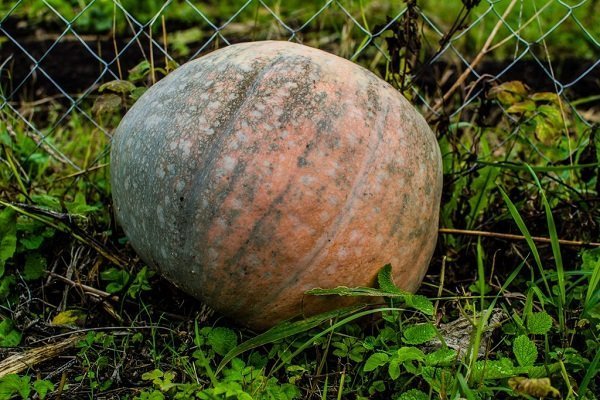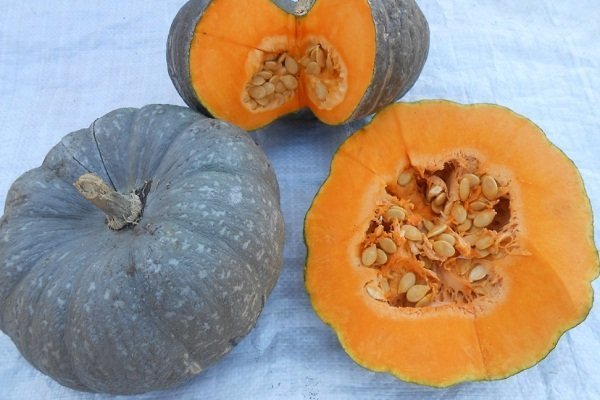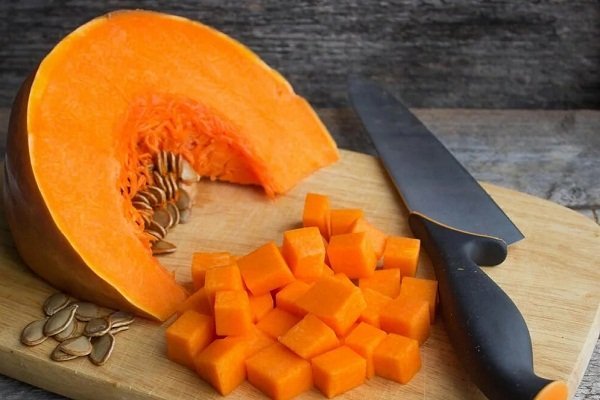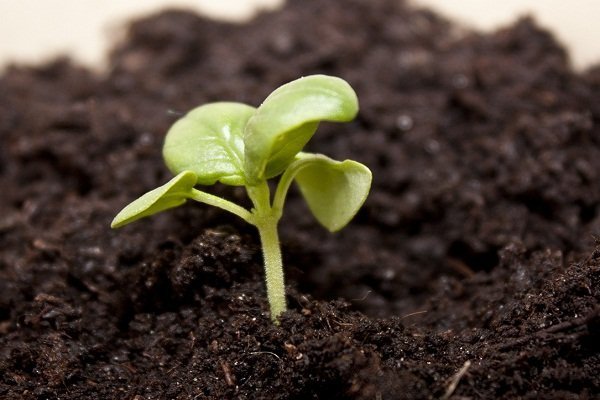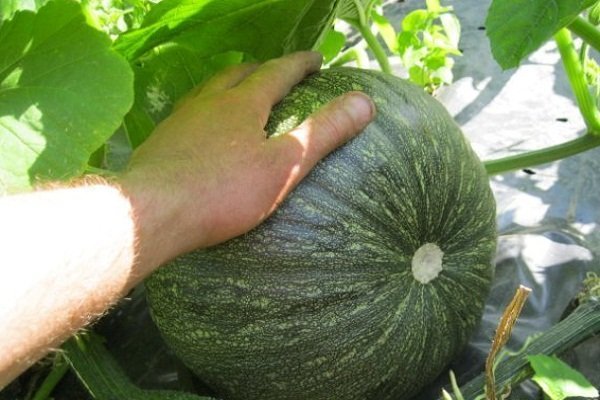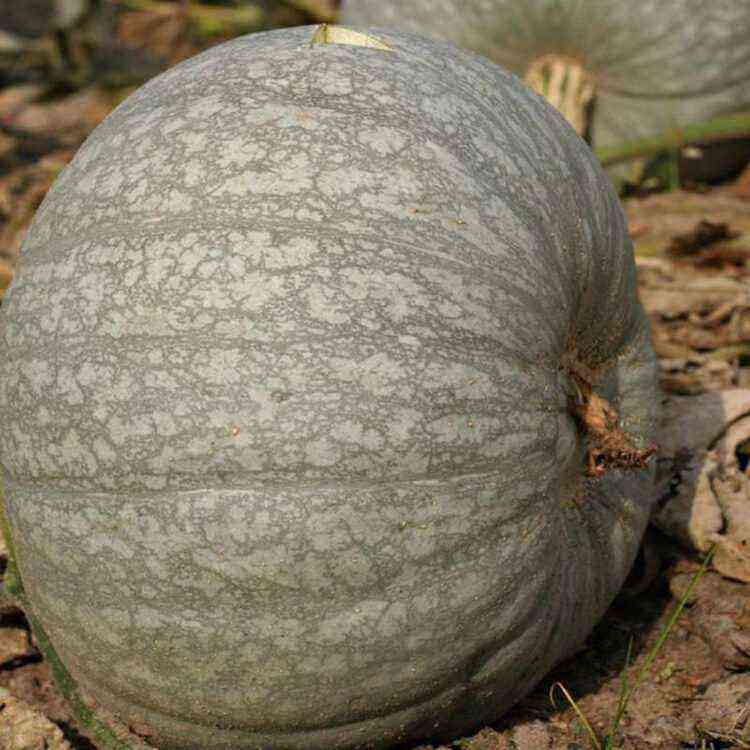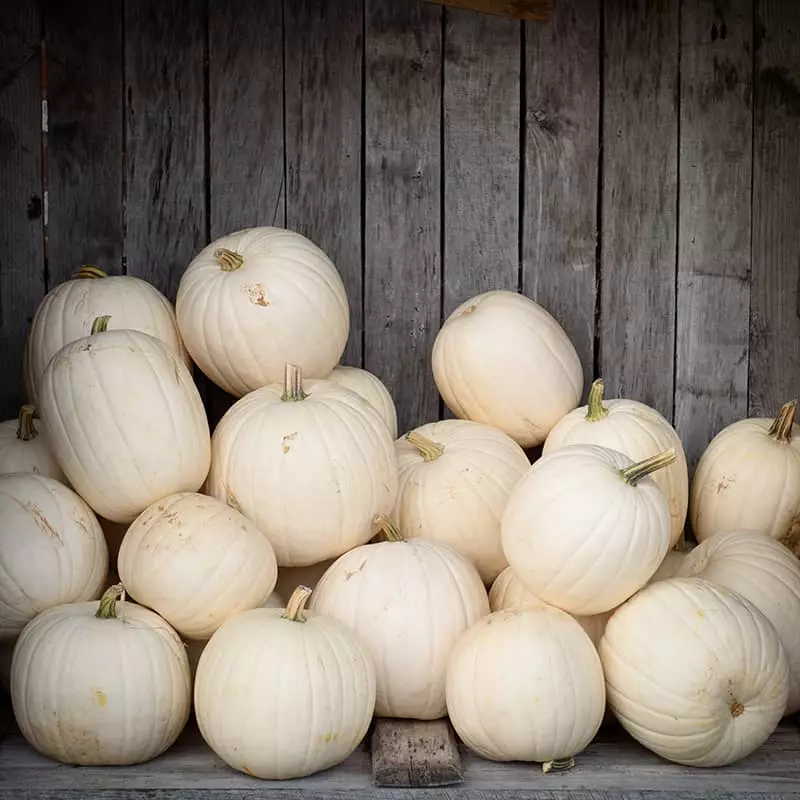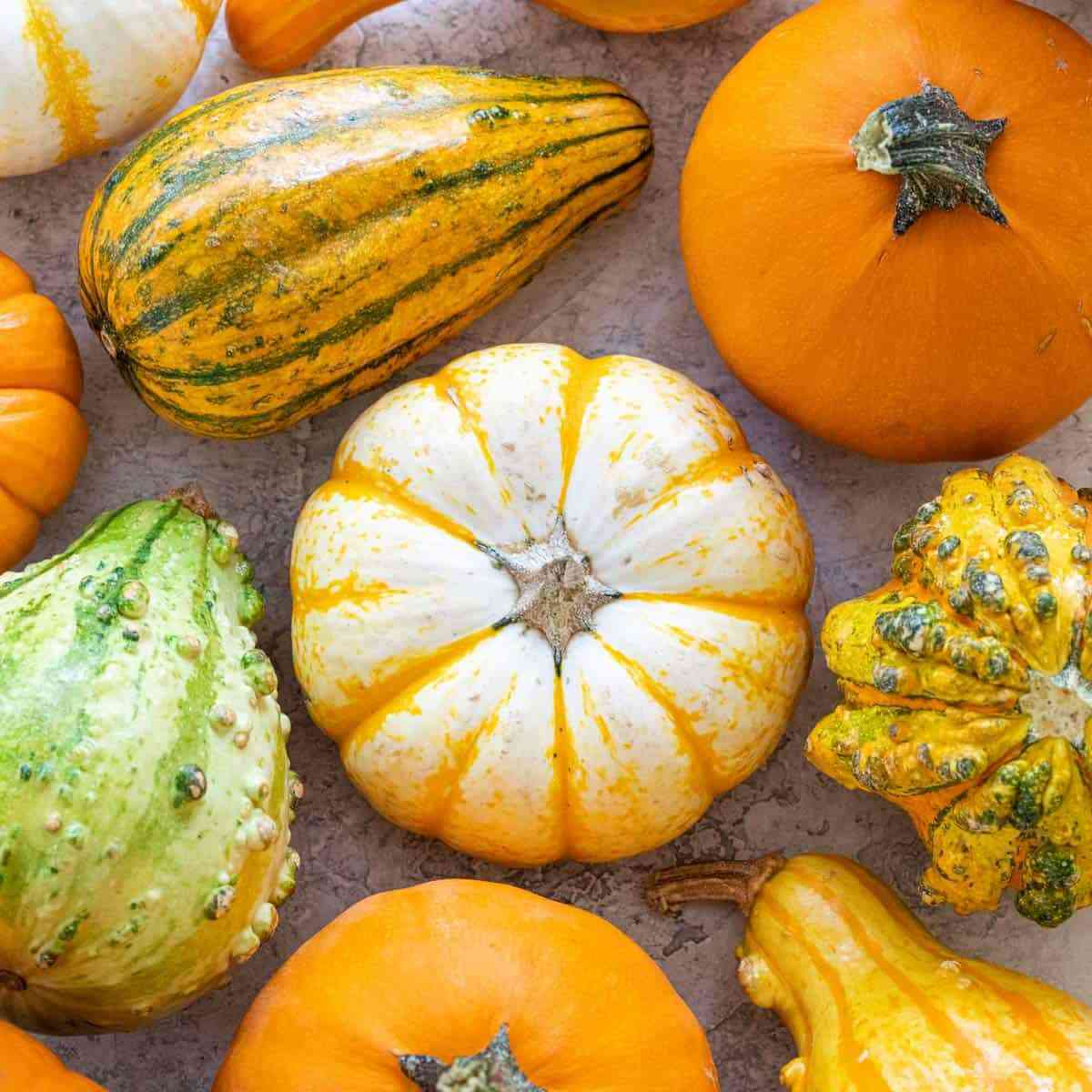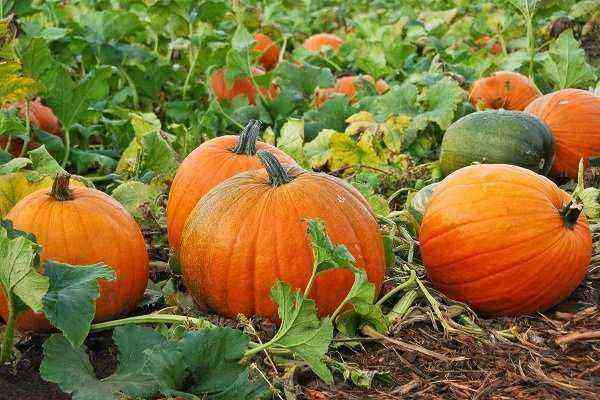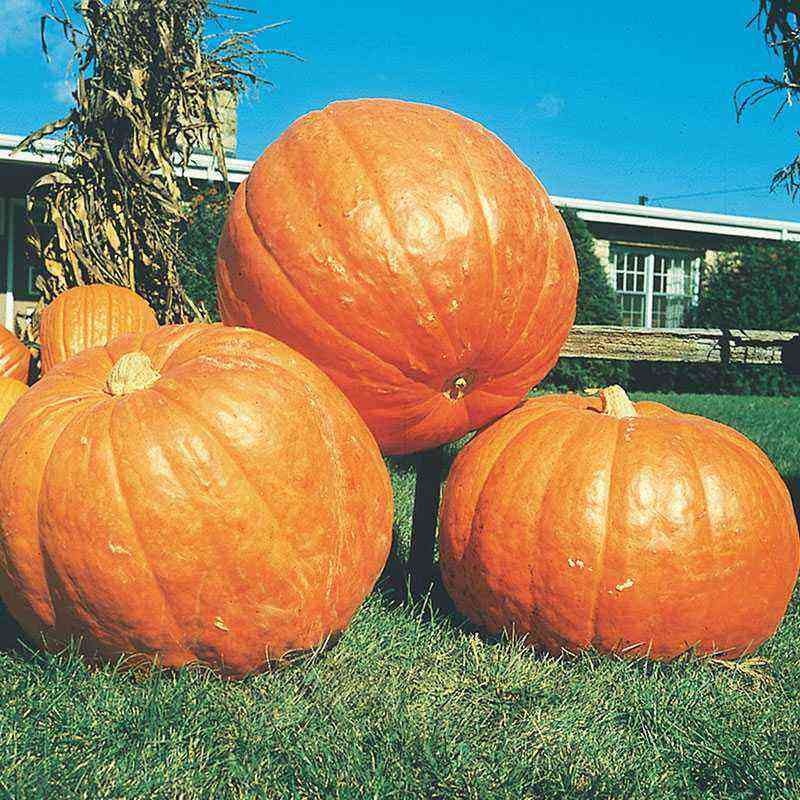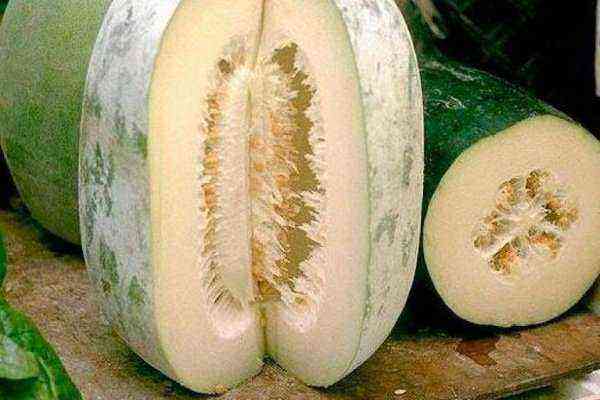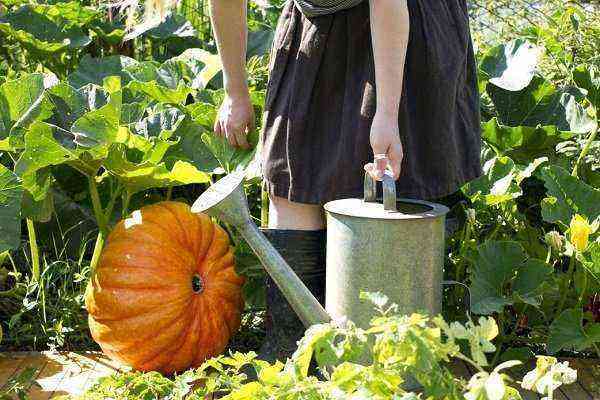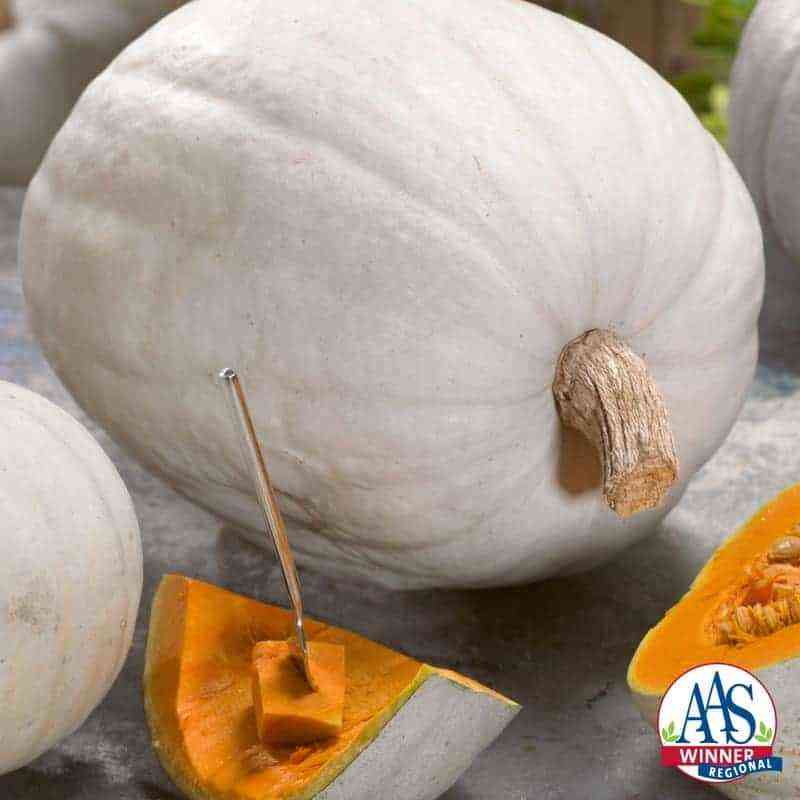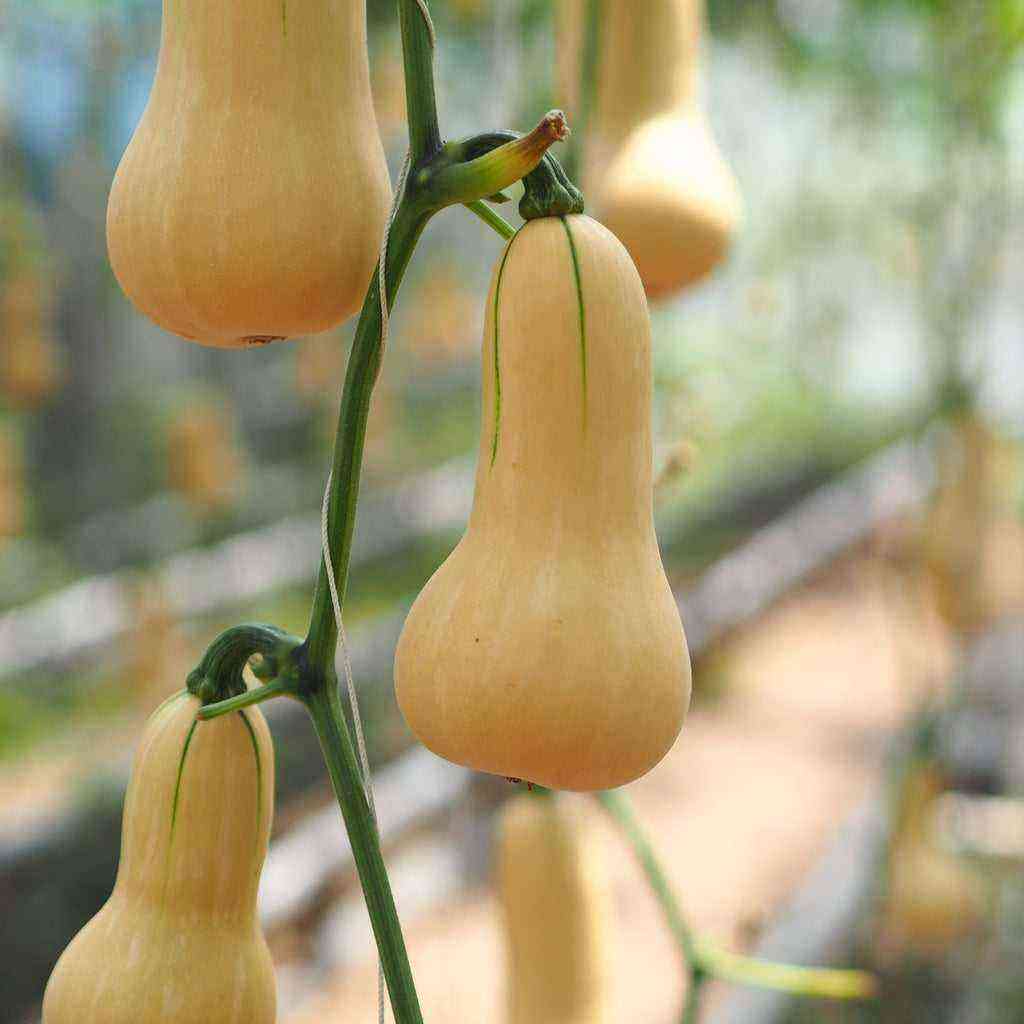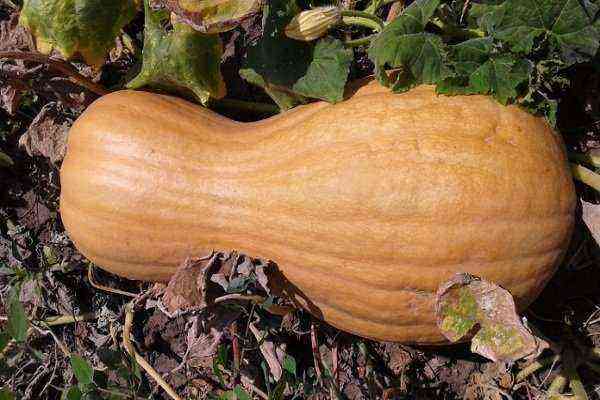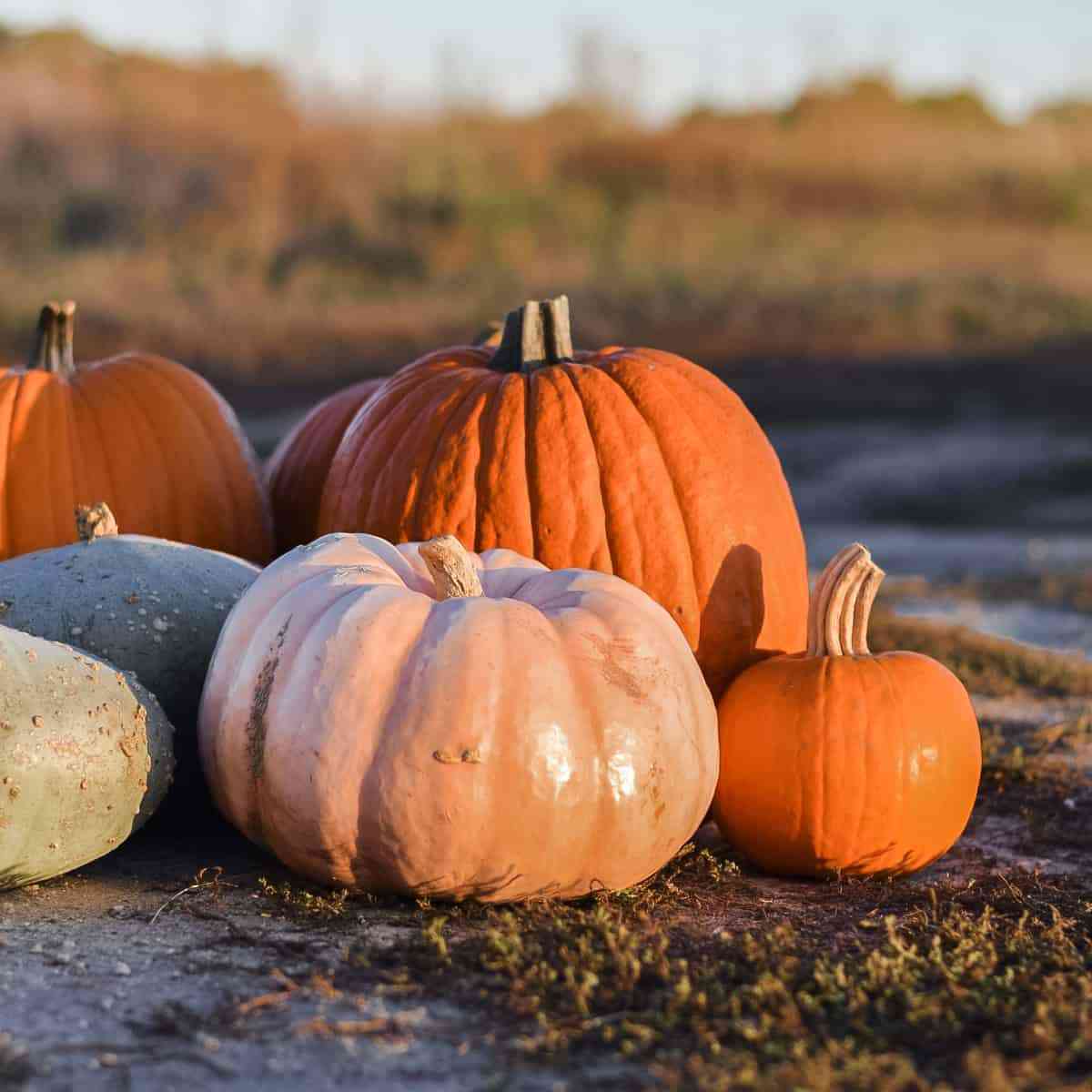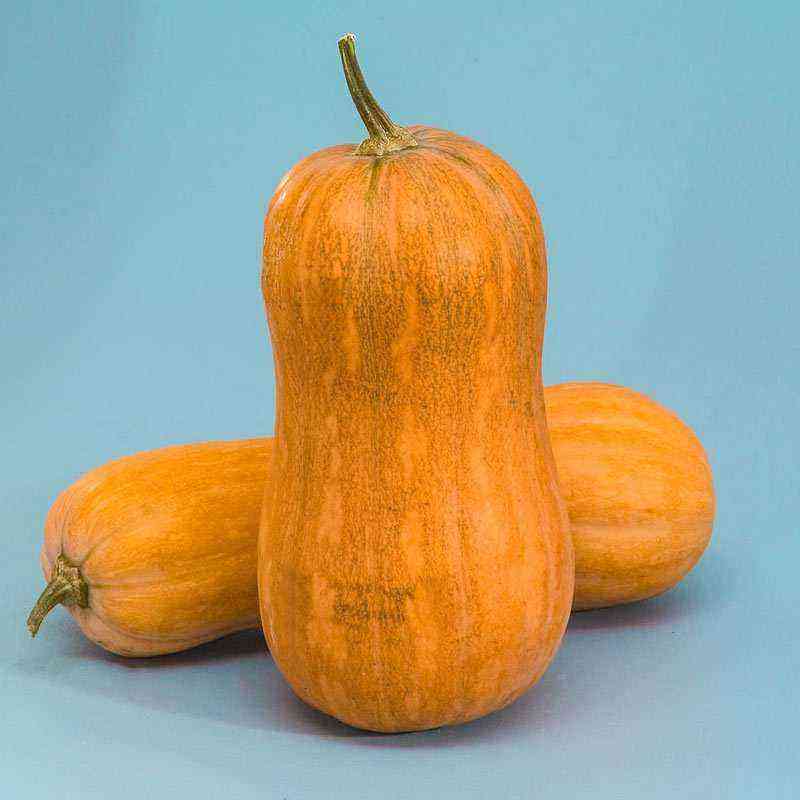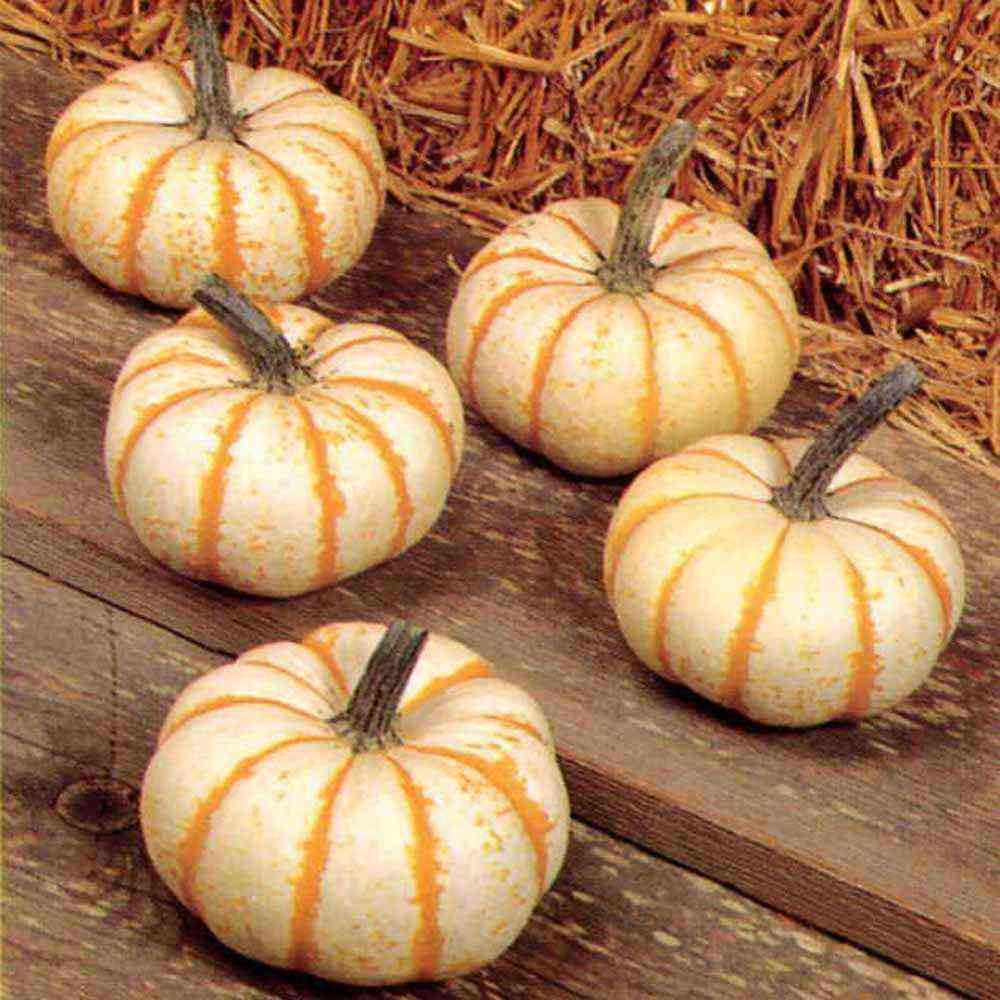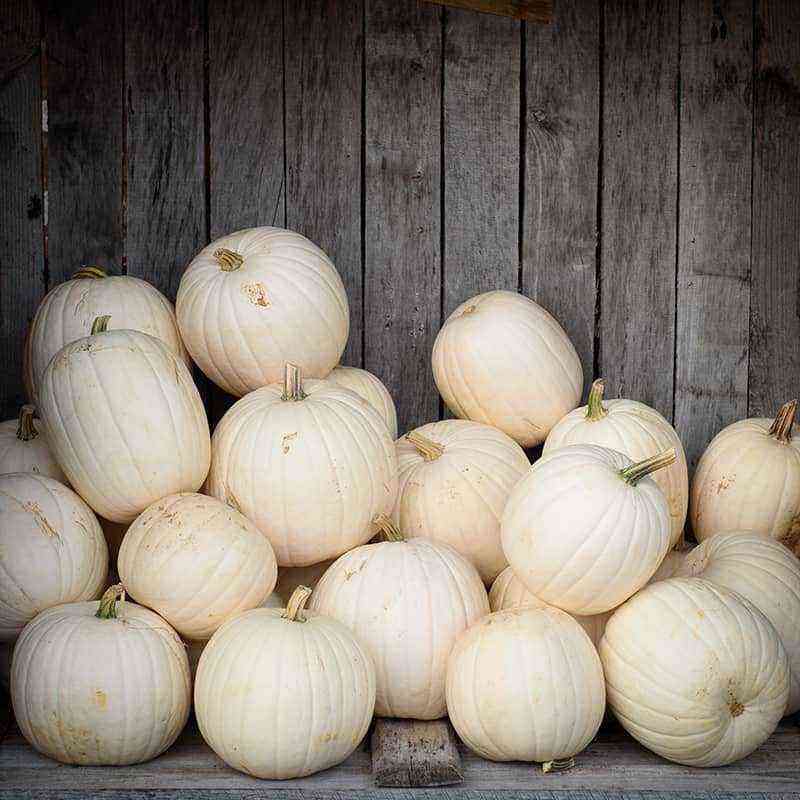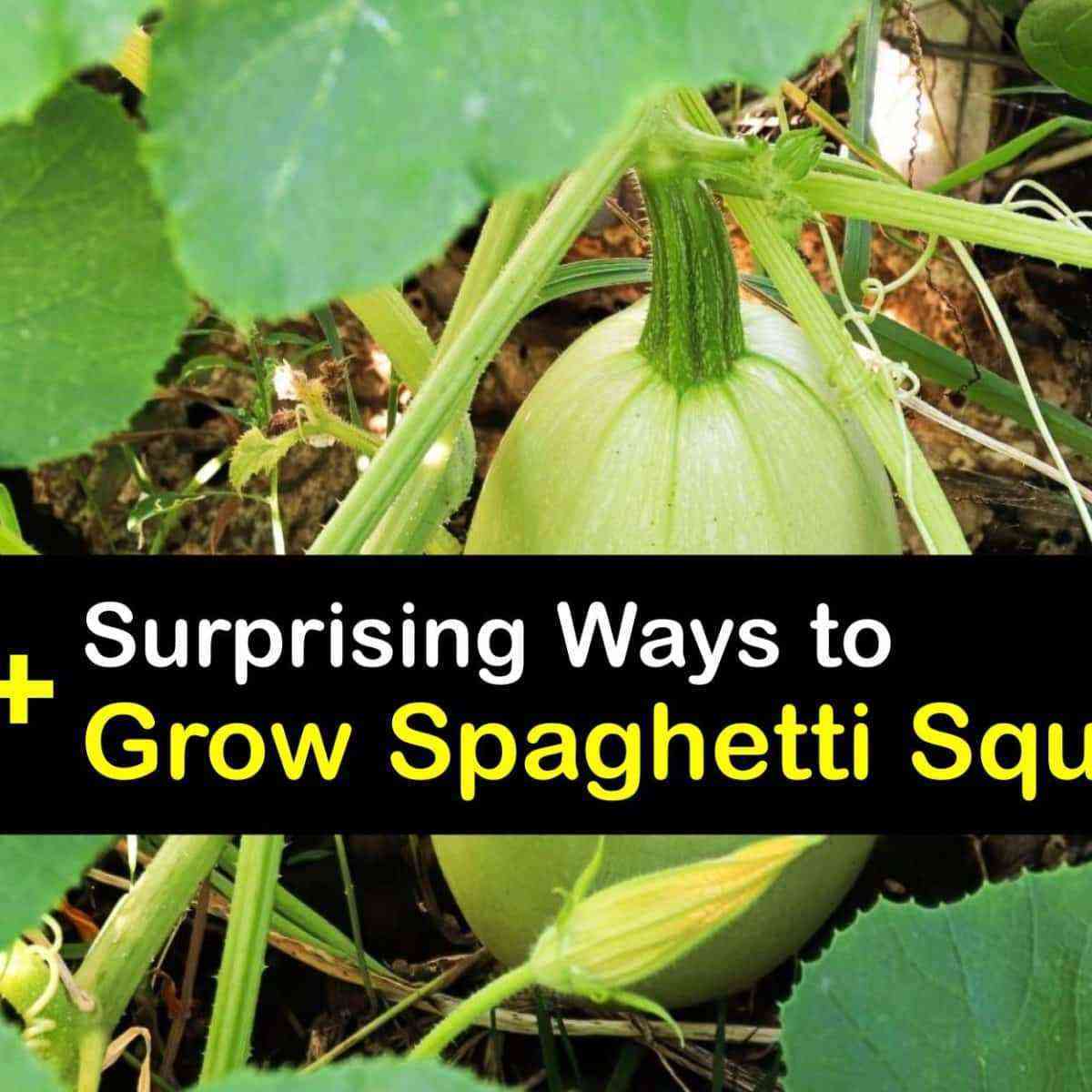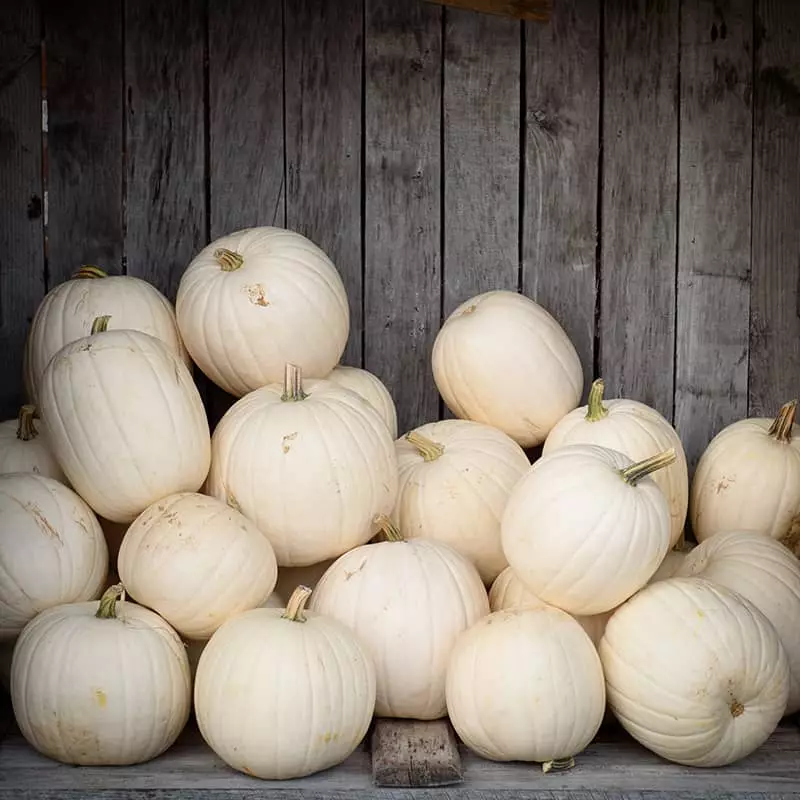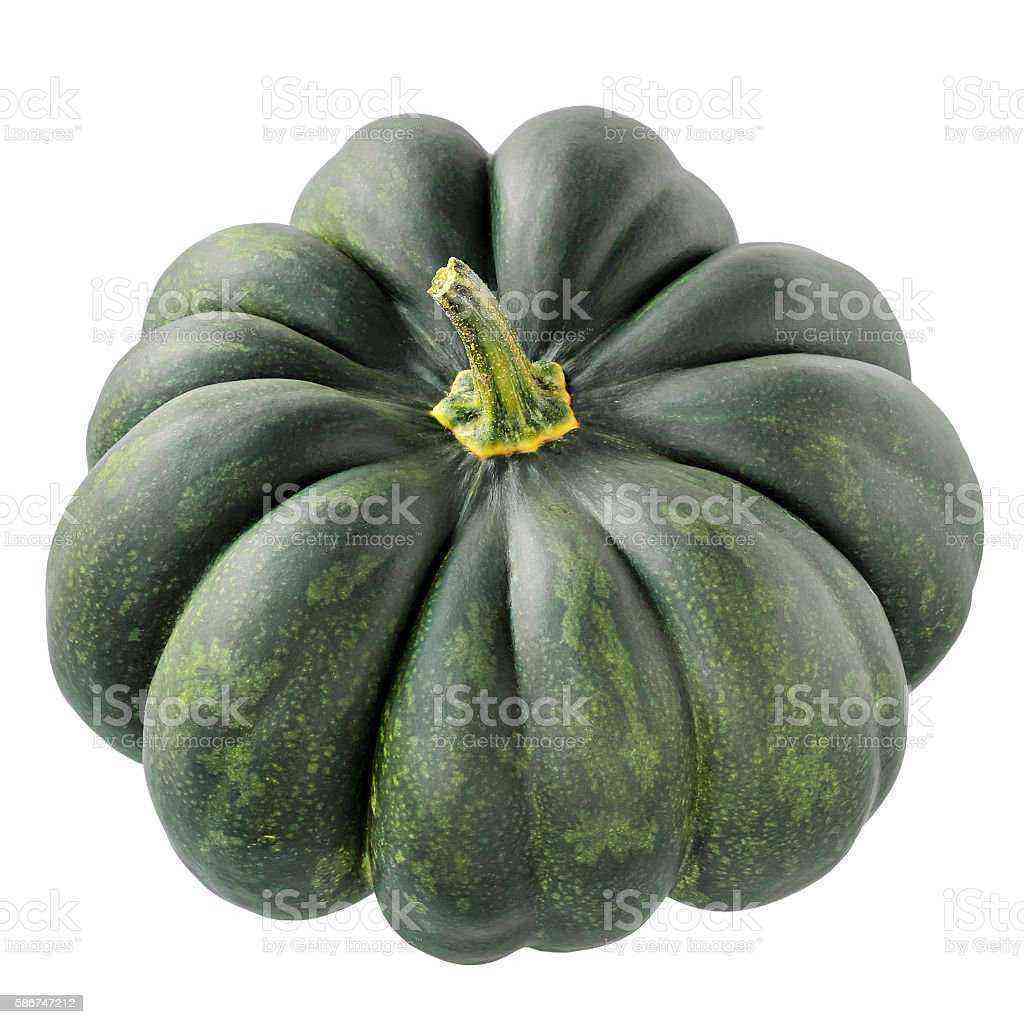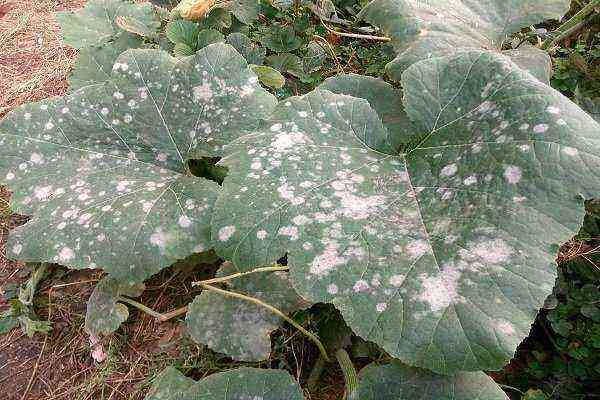Marble gourd has distinctive features: the surface is covered with veins, the color is emerald green, the peel is wrinkled, as a result of which the appearance of the variety resembles marble. The culture belongs to the middle-late, rather sweet (13% sugar), saturated with microelements, vitamins E, C, A.
marble gourd
Marble pumpkin is unpretentious in care
Marble gourd has juicy sweet pulp
General characteristics
Marble pumpkin is grown in Russia for a long period of time, therefore it is considered a well-known variety. The popularity of the pumpkin variety is based on the stability of high yields and excellent palatability (the pulp is sweet and juicy). After the formation of seedlings, 125-140 days pass before harvesting.
The whips of the plant are quite powerful, long and strong, since the pumpkin is large-fruited. Leaves – uncut, large, dark green. The flowers are bright yellow to attract pollinating insects.
The variety is frost-resistant and drought-resistant, thanks to which it is grown in almost all regions of the country. Despite this, the culture is thermophilic (under cool weather conditions and lack of light, the level of sugar content decreases, the pulp changes its structure). For this reason, it is better to grow a variety in the south.
Advantages and disadvantages
The main benefits marble gourd:
- high yield;
- fruit size;
- unpretentious care;
- sweetness;
- pleasant aroma and taste;
- transportability;
- keeping quality;
- beautiful appearance;
- there is no cracking of the skin.
Disadvantages:
- shadow intolerance;
- the need for constant fertilization.
Description of fruits
External indicators and taste qualities of Marble pumpkin depend on climatic and weather conditions, as well as the level of care, so it is impossible to get exactly the same vegetables under different factors. The peculiarity of the peel is that it looks quite strong, but it is cut easily.
Fruit characteristics:
- the taste of the pulp is sweet, unusual;
- juiciness – high;
- astringency, sourness is absent;
- the aroma increases with storage, has nutmeg notes;
- skin color – gray-dark, in a very mature state – green-gray;
- the average weight of pumpkins is 5-10 kg;
- shape – round flattened;
- the surface of the crust contains spots (occur 7-10 days before full maturation) and veins;
- seeds have a cream shade, size – up to 3 cm;
- the structure of the pulp is tender, the color is pronounced orange.
Productivity
Marble gourd is considered a high-yielding variety. With proper care and compliance with agrotechnical requirements from 1 square. m you can get up to 20 kg of vegetables.
Use of fruits
The variety is universal, therefore it is used for the following purposes:
- preparation of first, second courses (porridges, soups, mashed potatoes, casseroles, stews, etc.);
- production of juice, baby food;
- baking pies, cooking desserts;
- adding to salads;
- animal feed.
Marble pumpkin is saturated with useful substances, so the pulp is used in cosmetology (smoothes wrinkles) and medicine (has a positive effect on liver activity, improves visual acuity, restores the functionality of the gastrointestinal tract). The seed part is eaten, used to remove and suppress helminths in the human body (destroys worms).
Peculiarities of growing
The main condition for the successful cultivation of Marble Gourd is the fertility of the soil. If the soil is poor, you will have to constantly feed it. The site for planting must be prepared in the fall – dig a shovel to the depth of a bayonet, apply manure or humus.
Landing site preparation
The yield largely depends on the chosen location – the site should be well lit, free from drafts and shading. The best soil is loam and sandy loam. If the earth has high acidity, lime, peat and wood ash are added to it.
How to properly prepare the site:
- in the fall, dig the ground, making organic fertilizers;
- in the spring, dig the soil again (slightly, only for loosening);
- add compost;
- to improve drainage properties, it is recommended to add sawdust or sand directly during planting;
- so that the pumpkin does not get sick, it is advisable to disinfect the soil (you can buy Fundazol or pour it with a weak solution of manganese);
- remove the root system of weeds, household debris from the site.
Seed preparation
Seed material is prepared a couple of days before planting in the ground or for seedlings. Be sure to manually sort through each grain, rejecting damaged, spotty and hollow elements. Marble pumpkin has a unique property – a high level of germination, which eliminates the need for pre-germination. Therefore, the preparatory activities include the following:
- warm the seeds at a temperature of 40-45 degrees (you can put them in the oven for 3-4 hours or put them on a heating radiator for 12 hours);
- soak the seeds overnight in a solution of wood ash (1 tablespoon mixed with 0,5 liters of warm water), leave warm;
- dry the seed.
Planting seedlings
Pumpkin is grown in seedlings in the northern regions of Russia. A variety of containers are used for planting seeds – peat cups bought in a store, plastic cups, tetra-packs from under dairy and sour-milk products. Before pouring the soil, the containers (except for peat containers) are thoroughly washed and dried. Without fail, small holes are made in the bottom for drainage of the soil.
As a soil, you can use the following:
- Ready-made universal substrate from a specialized store. Such soil has the required level of acidity, is saturated with useful substances, which speeds up the process of spitting grains and improves seedling performance.
- Homemade blend. What you need: garden soil – 4 parts, sawdust – 1 part, humus – 1 part, wood ash – half a part. To exclude infection, the prepared composition is disinfected with a solution of potassium permanganate.
Rules for planting seeds and growing seedlings:
- pour a small layer of pebbles into the prepared container (again, for drainage);
- pour soil almost to the top;
- moisten the soil with a spray bottle;
- insert 2 seeds;
- sprinkle with soil;
- cover with plastic wrap;
- put on the sunny side;
- after 10-12 days, apply a mineral complex or organic fertilizer;
- seedlings are ready for picking in 20-21 days.
Other rules to follow:
- throughout the entire time it is necessary to monitor the level of humidity, periodically watering the seedlings;
- when the first shoots hatch, the film is removed;
- daylight hours for seedlings should be 14-16 hours, so at night the containers are placed under the lamps.
When the first 1-2 leaves appear, it is necessary to thin out the seedlings, that is, remove the weak sprout, and leave the strong one. This must be done carefully so as not to damage a healthy spine. You can not pull out the shoot. It is cut with nail scissors under the very surface of the soil.
Landing in open ground
Seeds are planted directly on the street beds in warm regions. It is not necessary to germinate grains, but it is worth adhering to the preparation rules. The temperature of the soil in the garden should vary from 13 to 18 degrees.
Step by step landing:
- dig holes up to 6 cm deep on the site;
- the distance between them should be at least 60 cm, not more than 1 meter;
- pour two liters of boiling water into each hole (for disinfection);
- when the water is absorbed, lay 2 grains;
- sprinkle with soil mixed with organic matter (humus);
- mulch.
Mulching is essential to maintain moisture. If frosts or a decrease in air temperature are expected, the seeds are covered with a film or a plastic bottle.
Watering
It is necessary to water the culture before the semi-ripening of the fruit. At the initial stages, young bushes require about 2 liters of water, then the amount of liquid gradually increases to 5 liters.
It is forbidden to pour water on the leaves – only on the surface of the earth. It is desirable to use rainwater or settled water.
Thinning and weeding
Thinning is done after the formation of 3 sheets. It is necessary to adhere to the same rules as when thinning seedlings.
Weeds have a detrimental effect on pumpkin crops – they spread infections, collect insects, infect with diseases, absorb moisture and nutrients. For these reasons, weeds are destroyed.
You need to pull out the grass every week until the moment when the whips and foliage of the pumpkin cover their entire area. Along with weeding, loosening is also carried out. These procedures are preferably done after watering the next day.
Feeding
This is an important agrotechnical condition. Fertilizers are applied 2 times a month. For this, the favorite dressing of Marble gourd is usually used – mullein. It is diluted with water in a ratio of 1:20.
Additionally, you can use growth stimulants, nettle tincture, aloe juice, yeast solutions, chicken manure, onion peel decoction.
Shrub formation
The lashes of this pumpkin are quite long, so a high-quality formation of a bush is required:
- it is desirable to remove stepchildren;
- more than 3 fruits cannot be left on each stem;
- if the lash is very long, pinch it;
- also, the lashes must be sprinkled with soil, which eliminates the risk of tangling.
Gardeners’ recommendations
Tips for growing:
- It is necessary to follow the rules of crop rotation. You can not grow Marble Gourd after cucumbers, squash and zucchini. The best previous vegetable is onion, legumes.
- If seedlings are grown in greenhouse conditions, be sure to install a ventilation system or open a greenhouse for ventilation. Otherwise, the risk of fungal diseases increases.
- It is necessary to irrigate the beds in the evening or early morning. It is strictly forbidden to water the culture during the day, as sunburn is possible.
- Do not allow excessive moisture, this leads to rot.
- The variety loves mineral supplements, so add a solution of wood ash.
- It is desirable to loosen to a depth of 7-10 cm.
- It is allowed to fertilize the soil until mid-August, no more.
Diseases and pests
Pumpkin Marble is not a pampered culture, therefore, subject to agricultural technology, it is not subject to morbidity and attack by pests and insects. Under other conditions, the following diseases most often occur, such pests affect:
- Powdery mildew characterized by a white coating on the leaf plate. Topaz, a colloidal sulfur solution, will help get rid of it.
- Bacteriosis covers the plant with brown spots. Treatment is spraying with copper-based preparations.
- white fungal rot localized on the above-ground part of the culture, differs in bloom by the type of flakes. To eliminate the disease, treatment with a solution of copper sulfate (0,5%) is required.
- Tick of the web easily recognized, as the insect forms cobwebs on the plant. For treatment, insecticides, folk remedies (alkaline garlic or onion tincture) are used.
- melon aphid localized on the ovaries and leaves from the inside. For the fight, the same means are used as in the previous case.
- Slugs they eat ovaries, flowers, leaves, stems. You can get rid of them with the help of traps. To do this, wet rags and cabbage leaves are laid out next to the bush.
As preventive measures against diseases and pests, the following should be done:
- adhere to the rules of agricultural technology and crop rotation;
- plant pepper, tobacco next to the pumpkin;
- do not plant a pumpkin thickly;
- monitor the level of soil moisture;
- feed with fertilizers to increase plant immunity;
- delete infected items daily;
- disinfect seeds, soil, planting containers;
- pull out weeds.
How to harvest and store crops?
Marble pumpkin is cut along with the stalk around the beginning of September. After removing from the garden, the fruits are laid out in a room or in the sun for several days until completely dry.
Storage conditions:
- shelf life – up to 12 months;
- room humidity – 70-80%;
- temperature regime – 5-12 degrees;
- the room must be well ventilated.
Reviews
Nikita Dyshkant, 29 years old. I grow marble pumpkin for myself and for sale. This is a fairly profitable option, as the variety is high-yielding and very sweet. Over the years, I have already gotten used to properly caring for and I want to say that you should not feed the crop much, it is enough to fertilize 3-4 times per season. I leave no more than 4 fruits on the stems, but if I need them to be large, then only a couple of pieces remain. Valentina Pesik-Volkhovskaya, 51 years old. I saw a marble pumpkin for the first time at the exhibition, I was struck by its appearance. When I tried it, I was also surprised how sweet and fragrant it was. I put the fruits into juices, close the puree to my granddaughter, and cook sweet cereals. But for second courses, I don’t like it – well, there’s a lot of sugar. I grow it by seed method, immediately sow in the soil. The only thing that upsets is the need to dig in both autumn and spring. Maybe there is another way, but I haven’t tried it.
Marble pumpkin has not only an attractive appearance, but also excellent taste, which makes it very popular. If you follow the rules of cultivation and care, you can get the maximum yield in one season. It is also important to observe the rules of storage, otherwise the fruits will rot.
